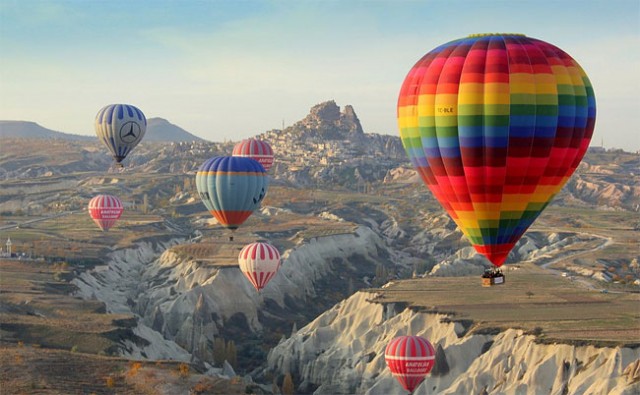Stamp: Lebaudy Airship, France (Saint Vincent and The Grenadines 1999)
Lebaudy Airship, France (Saint Vincent and The Grenadines 1999)
26 April (Saint Vincent and The Grenadines ) within release History of Aviation goes into circulation Stamp Lebaudy Airship, France face value 5 East Caribbean dollar
| Stamp Lebaudy Airship, France in catalogues | |
|---|---|
| Michel: | Mi: VC 4623 |
Stamp is square format.
Also in the issue History of Aviation:
- Stamp - Fokker DR1 Triplane face value 1.10;
- Stamp - Sopwith Pup face value 1.10;
- Stamp - Granville R-1 "Gee Bee", 1932 face value 1.10;
- Stamp - Bleriot XI, Channel Crossing, 1914 face value 5;
- Souvenir Sheet - Lebaudy Airship, France face value 5;
- Stamp - Fokker T-2 (Fokker F.IV), 1923 face value 1.10;
- Stamp - Jeannin Stahl Taube face value 1.10;
- Stamp - M-130 Clipper face value 1.10;
- Mini Sheet - History of Aviation face value 8*1.10;
- Stamp - Lebaudy Airship, France face value 5;
- Stamp - Curtiss-Wright CW-16E Floatplane face value 1.10;
- Stamp - Lilienthal Glider Nr 5, 1891 face value 0.70;
- Stamp - SPAD S.XIII "Smith IV" face value 1.10;
- Stamp - Zeppelin LZ-129 "Hindenburg" face value 0.90;
- Stamp - Montgolfier Balloon, France 1783 face value 0.60;
- Stamp - Hughes H-1 Racer face value 1.10;
- Stamp - Sopwith Camel face value 1.10;
- Stamp - Lockheed Sirius "Tingmissartoq" face value 1.10;
- Stamp - Staggerwing Beechcraft C17L face value 1.10;
- Stamp - Dc-3, 1937 face value 1.10;
- Stamp - Dayton Wright DH-4 Bomber face value 1.10;
- Stamp - Albatros D.Va face value 1.10;
- Stamp - Sopwith Dove face value 1.10;
- Mini Sheet - History of Aviation face value 8*1.10;
- Souvenir Sheet - Bleriot XI, Channel Crossing, 1914 face value 5;
- Stamp - Wilbur Wright, Flyer I, 1903 face value 1;
Stamp Lebaudy Airship, France it reflects the thematic directions:
A hot air balloon is a lighter-than-air aircraft consisting of a bag, called an envelope, which contains heated air. Suspended beneath is a gondola or wicker basket (in some long-distance or high-altitude balloons, a capsule), which carries passengers and a source of heat, in most cases an open flame caused by burning liquid propane. The heated air inside the envelope makes it buoyant, since it has a lower density than the colder air outside the envelope. As with all aircraft, hot air balloons cannot fly beyond the atmosphere. The envelope does not have to be sealed at the bottom, since the air inside the envelope is at about the same pressure as the surrounding air. In modern sport balloons the envelope is generally made from nylon fabric, and the inlet of the balloon (closest to the burner flame) is made from a fire-resistant material such as Nomex. Modern balloons have been made in many shapes, such as rocket ships and the shapes of various commercial products, though the traditional shape is used for most non-commercial and many commercial applications.
The hot air balloon is the first successful human-carrying flight technology. The first untethered manned hot air balloon flight in the world was performed in Paris, France, by Jean-François Pilâtre de Rozier and François Laurent d'Arlandes on November 21, 1783, in a balloon created by the Montgolfier brothers. The first hot air balloon flown in the Americas was launched from the Walnut Street Jail in Philadelphia on January 9, 1793, by the French aeronaut Jean Pierre Blanchard. Hot air balloons that can be propelled through the air rather than simply drifting with the wind are known as thermal airships.
An air force, also known in some countries as an aerospace force or air army, is in the broadest sense, the national military branch that primarily conducts aerial warfare. More specifically, it is the branch of a nation's armed services that is responsible for aerial warfare as distinct from an army, navy, or a marine corps. Typically, air forces are responsible for gaining control of the air, carrying out strategic and tactical bombing missions, and providing support to land and naval forces.
The term "air force" may also refer to a tactical air force or numbered air force, which is an operational formation either within a national air force or comprising several air components from allied nations. Air forces typically consist of a combination of fighters, bombers, helicopters, transport planes and other aircraft.
Many air forces are also responsible for operations of the military space, intercontinental ballistic missiles (ICBM), and communications equipment. Some air forces may command and control other air defence assets such as anti-aircraft artillery, surface-to-air missiles, or anti-ballistic missile warning networks and defensive systems. Some nations, principally Russia, the former Soviet Union and countries who modelled their militaries along Soviet lines, have or had an air defence force which is organizationally separate from their air force.
Peace-time/non-wartime activities of air forces may include air policing and air-sea rescue.
Air forces are not just composed of pilots, but also rely on a significant amount of support from other personnel to operate. Logistics, security, intelligence, special operations, cyber space support, maintenance, weapons loaders, and many other specialties are required by all air forces.
Aviation is the practical aspect or art of aeronautics, being the design, development, production, operation and use of aircraft, especially heavier than air aircraft. The word aviation was coined by French writer and former naval officer Gabriel La Landelle in 1863, from the verb avier (synonymous flying), itself derived from the Latin word avis ("bird") and the suffix -ation.



